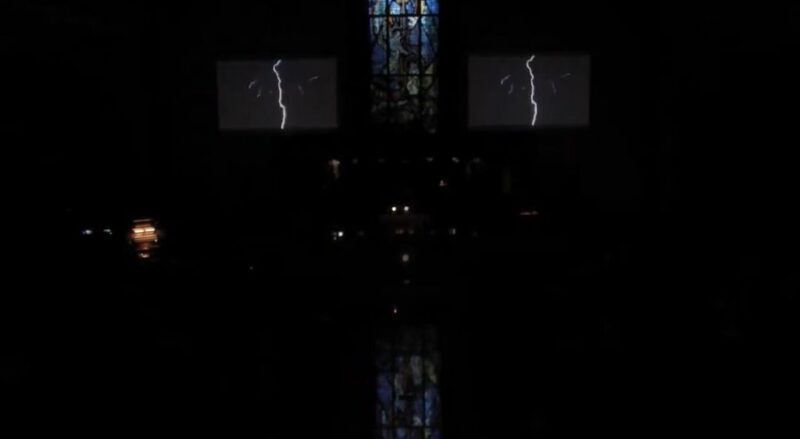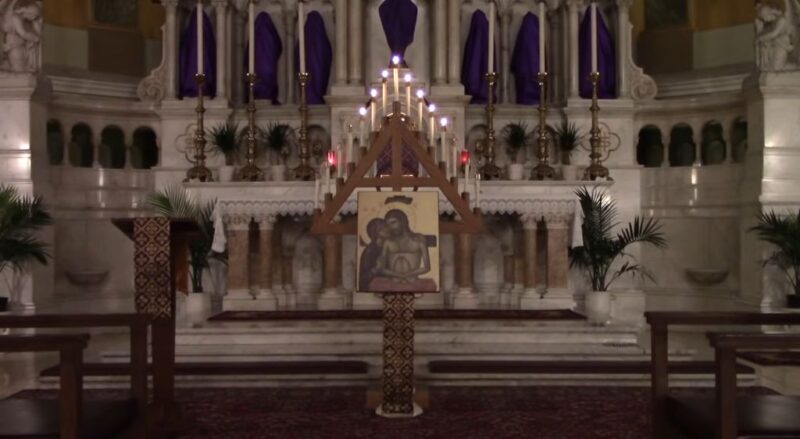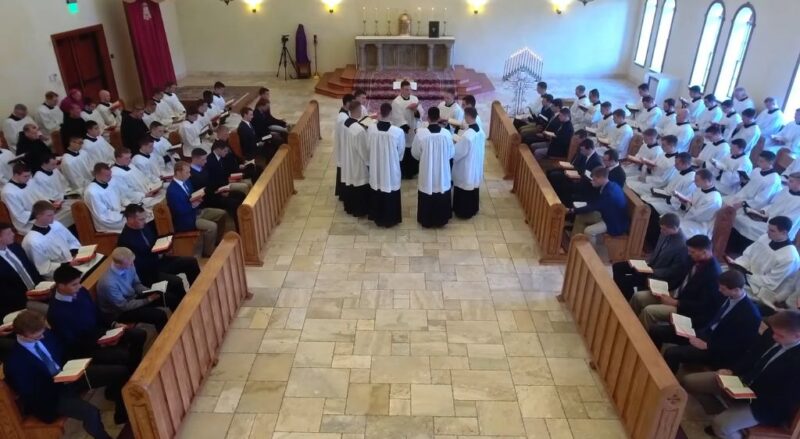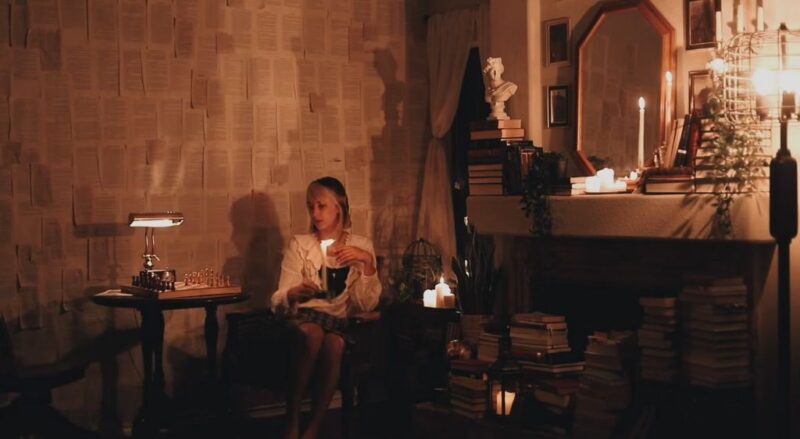The Tenebrae service is an ancient Christian practice that dives into the heart of Holy Week, offering a unique perspective on the passion and death of Christ. To newcomers, this solemn, shadowy service might seem enigmatic or overwhelming. This guide will help unravel its mystery, making this rich tradition more accessible and meaningful.
Much like the intricate understanding of Tenebrae, other aspects of Catholic faith, such as plenary indulgences, offer profound insights into spiritual growth and redemption.
An Overview

Tenebrae, from the Latin for “darkness” or “shadows,” is a liturgical service observed during the last three days of Holy Week—Maundy Thursday, Good Friday, and Holy Saturday. These days remember the passion, death, and burial of Jesus Christ.
The Meaning
Tenebrae is a service of shadows. It utilizes darkness and silence as poignant symbols of Jesus’s suffering and death. As scriptures are read, and candles are extinguished, the growing darkness envelops the congregation, creating a physical representation of the sorrow and mourning experienced by the disciples following Christ’s crucifixion.
This service is not just about dwelling on sorrow, though. Amid the darkness, it holds a powerful message of hope. While the world around us may be engulfed in shadows, Christ’s light, though seemingly dimmed, can never be fully extinguished.
History

Tenebrae has its roots in the monastic practice of praying for the divine hours. In the early church, monks would gather at various times throughout the day and night for prayer. This service evolved over centuries, finding its place in the Holy Week observances.
By the Middle Ages, Tenebrae had taken the form that many recognize today. Despite the many reforms of the liturgy over the centuries, service has remained relatively unchanged, a testament to its powerful symbolic message.
The Structure
A Tenebrae service is typically marked by several key components, including the reading of scriptures, psalms and the gradual extinguishing of candles. Let’s delve into the intricacies of this structure.
Reading of Scriptures
The reading of scriptures is central to Tenebrae. Narratives of the events leading to Jesus’s crucifixion are shared, often taken from the gospels of Matthew, Mark, Luke, and John.
- The reading of these scriptures allows the congregation to meditate on the passion of Christ.
- It offers a narrative flow, giving the participants an immersive experience of Jesus’s last hours.
Psalms and Hymns
The service often incorporates the singing of psalms and hymns. These usually reflect the solemn tone of the service and are interspersed with the scripture readings.
- The use of Psalms is significant as they were a significant part of Jewish worship during Jesus’s time.
- Hymns, often those written in a minor key, mirror the solemnity of the occasion.
The Extinguishing of Candles
One of the most distinguishing features of Tenebrae is the gradual extinguishing of candles throughout the service. This act is a powerful symbol and central to the Tenebrae experience.
The Symbolism of the Candles
The candles used in Tenebrae are usually number fifteen, often arranged on a triangular holder known as a “hearse.” Each candle holds a symbolic meaning.
- The topmost candle represents Christ, while the other fourteen symbolize the apostles and other disciples.
- The extinguishing of each candle marks different stages of Jesus’s passion and abandonment by his followers.
The Final Candle
In the final part of the service, the last candle, representing Christ, is hidden, typically behind an altar, marking Jesus’s death and burial. The church is then in total darkness.
- This moment is usually followed by a loud noise, known as “strepitus,” symbolizing the earthquake at Christ’s death.
- The last candle is then brought back, its light a symbol of the hope of resurrection.
Participation
Attending a Tenebrae service is not a passive act. It’s a participatory experience designed to immerse the congregation in the events of Holy Week.
Engaging with the Scriptures

One way to actively participate in Tenebrae is by engaging with the scripture readings. Listening to the narratives of Jesus’s last hours can be an opportunity for personal reflection and spiritual growth.
Take time to meditate on the words being read. Consider what they mean for you personally and for your faith journey.
The Significance of Silence
Silence is a powerful part of Tenebrae. In our often noisy, bustling world, silence offers a chance for reflection and connection with the divine.
- Embrace the silences during the service.
- Use these moments to consider the solemnity of the occasion, to pray, or to simply sit in quiet reflection.
The Importance Today

Despite its ancient roots, the Tenebrae service remains relevant today. It offers a unique perspective on the passion of Christ, encouraging reflection and introspection.
A Call to Reflection
Tenebrae encourages us to pause and consider the passion of Christ. In our fast-paced world, such moments of reflection are valuable.
It serves as a reminder of the sacrifice made by Christ and of the hope that comes even in our darkest hours.
Connecting with Tradition
Participating in this service also means connecting with an age-old tradition. It’s a way to join with countless believers across centuries who have marked Holy Week in this manner.
As such, Tenebrae serves as a link to the past, connecting us with the broader Christian tradition in a tangible, powerful way.
Preparation
To fully appreciate and participate in a Tenebrae service, it helps to prepare yourself both mentally and spiritually. Let’s explore a few ways you can do that.
The Purpose

Before attending a Tenebrae service, it’s important to understand its purpose. Tenebrae is not simply a religious observance; it is a deeply spiritual journey that invites us to experience the suffering, death, and hopeful anticipation of Christ’s resurrection.
Taking time to learn about the service, its history, and its symbolism can enhance your participation and make the experience more meaningful.
Spiritual Preparation
Spiritual preparation is another vital aspect. In the days leading up to the service, you might choose to spend extra time in prayer or scripture reading, focusing particularly on the events of Christ’s passion.
This could also be a time for self-examination and reflection. Consider what parts of your life may be causing spiritual ‘darkness’ and how the light of Christ can illuminate those areas.
The Tenebrae Service for Families
This service can be a powerful way for families to come together during Holy Week. It can offer valuable lessons for both children and adults and help foster a deeper understanding of Christ’s sacrifice.
Involving Children
Tenebrae might seem intense for young children, but with careful explanation and preparation, it can be a profound experience for them too.
Before the service, explain to them what will happen and why. During the service, guide them through the readings and songs. The act of extinguishing candles can be particularly engaging for children and can prompt meaningful discussions about the passion of Christ.
Family Discussions
After the service, take time as a family to discuss what you’ve experienced. Encourage questions and provide space for everyone to share their thoughts and feelings. This can be a valuable time of shared spiritual growth.
Adapting Tenebrae for Home Use

While traditionally held in a church setting, a Tenebrae service can also be adapted for use at home, especially if you cannot attend a communal service or are looking for a more personal experience.
Creating a Sacred Space
One of the first steps to adapting Tenebrae for home use is to create a sacred space. This can be a quiet room, free of distractions, where you can focus on the service. You may choose to dim the lights to reflect the ‘shadow’ theme.
Gathering Materials

The next step is gathering the necessary materials. You’ll need a Bible or a printout of the scripture readings typically used and a sufficient number of candles. A traditional Tenebrae ‘hearse’ for the candles would be ideal, but any safe arrangement will do.
FAQs
What does “Tenebrae” mean?
Tenebrae is Latin for “darkness.”
When was the Tenebrae Service originally celebrated?
It was originally a celebration of matins and lauds of the last three days of Holy Week (Maundy Thursday, Good Friday, and Holy Saturday) in the evening of the previous day (Holy Wednesday, Maundy Thursday, and Good Friday).
What is the modern celebration of Tenebrae like?
Modern celebrations may be of quite different content and structure, based, for example, on the Seven Last Words or readings of the Passion of Jesus. They may be held on only one day of Holy Week, especially Spy Wednesday (Holy Wednesday).
Which Christian denominations celebrate the Tenebrae Service?
Liturgical celebrations of this kind now exist in the Catholic Church’s Latin liturgical rites, Lutheranism, Anglicanism, Methodism, Reformed churches, and Western Rite Orthodoxy.
What is the significance of the candles in the Tenebrae Service?
The principal ceremony is the gradual extinguishing of candles upon a stand in the sanctuary called a hearse. Eventually, the Roman Rite settled on fifteen candles, one of which is extinguished after each of the nine psalms of Matins and the five of lauds.
What does the “strepitus” or “loud noise” symbolize in the Tenebrae Service?
The strepitus (Latin for “great noise”), made by slamming a book shut, banging a hymnal or breviary against the pew, or stomping on the floor, symbolizes the earthquake that followed Christ’s death, although it may have originated as a simple signal to depart.
Are there any musical compositions associated with the Tenebrae Service?
Yes, the lessons of the first nocturn at matins are taken on all three days from the Book of Lamentations and are sung to a specific Gregorian reciting tone. The Lamentations of Jeremiah the Prophet have been set to polyphonic music by many composers, including Palestrina, Tallis, and Lassus.
Final Words
Whether you’re new to Tenebrae or have been participating for years, this solemn service offers a unique, immersive experience of Holy Week. It invites us into the darkness but leaves us with a spark of light— a symbol of the resurrection hope that lies ahead.
